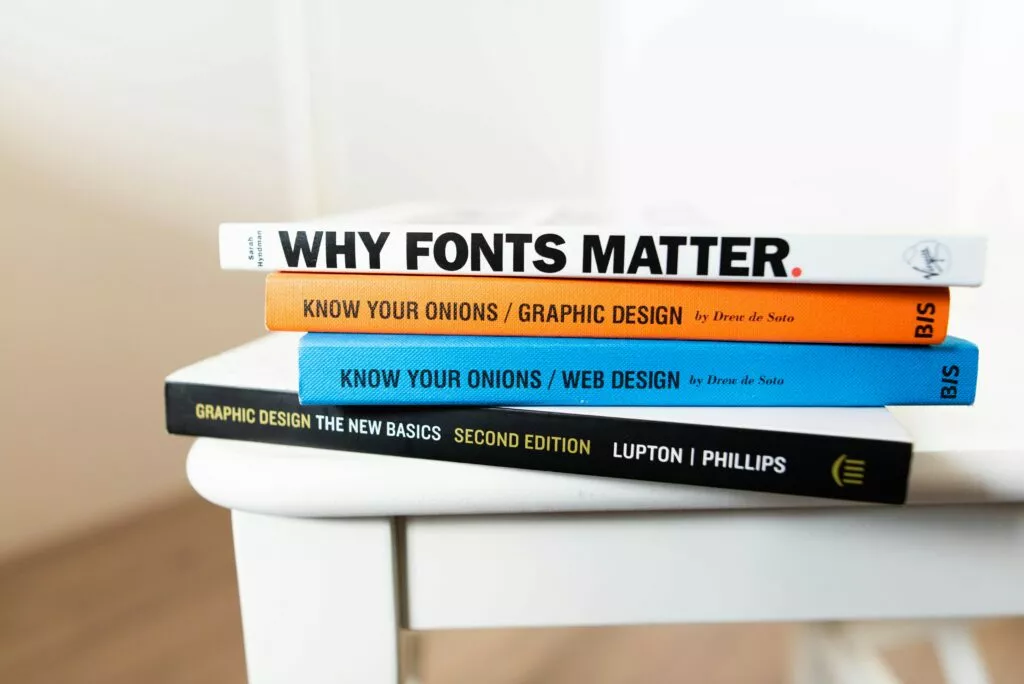Selecting the appropriate fonts for your brand is an important choice that will have a big impact on how people perceive and identify your company. Fonts are more than just characters on a page or screen they also express personality, tone, and emotion. A combination of creativity, knowledge of design principles, and insight into the core of your business are necessary when choosing the perfect font.

Understand Your Brand’s Personality
It’s important to have a firm grasp of the personality of your brand before exploring the enormous sea of font options. Ask yourself:
- What qualities make up your brand’s foundation?
- How do you want the audience you feel?
- What impression do you want to leave with customers about your brand (professional, fun, sophisticated, rough, etc.)?
These characteristics should be reflected in the font you choose. For example, a tech business might select a modern, clean sans-serif font, yet a luxury brand might go for a sleek, elegant serif font.
Know the Basic Font Categories
Fonts can be roughly divided into several types, each with specific qualities and applications:
- Serif Fonts: The ends of the letters in these fonts have little strokes or lines connected to them. Brands that wish to project authority and reliability frequently employ them because of their timeless, classic vibe (e.g., Times New Roman, Georgia).
- Sans-serif Fonts: Sans-serif fonts have a modern, clean appearance since they do not have the little lines at the ends of their letters. They are extensively used and adaptable in digital environments (e.g., Helvetica, Arial).
- Script Fonts: Script fonts resemble calligraphic or handwritten writing. They are appropriate for brands that desire a unique or artistic touch because they can be stylish, informal, or ornamental (e.g., Brush Script, Pacifico).
- Display Fonts: Often used for headlines or logos, these fonts are made to stand out. They can be bold, eccentric, or creative (e.g. Impact, Lobster).
- Monospaced Fonts: These fonts have equal spacing between each character. They are frequently employed in coding or design contexts (e.g., Courier, Consolas) and have a technical, retro feel.
Consider Readability and Legibility
The message of your brand will be decreased by a font that is difficult to read, regardless of how beautiful it is. To make sure your font is readable and comprehensible, use the following tips:
- Size: Verify that the font size is suitable for the task at hand. Larger and more ornamental headlines are acceptable, but body text should still be accessible at lesser sizes.
- Contrast: Text and backdrop contrast that is high enhances readability. Keep your writing dark grey on black backgrounds and light grey on white backgrounds to a minimum.
- Spacing: Be mindful of both line and letter spacing (leading and kerning). In addition to improving readability, proper space gives your writing a polished, organized appearance.
- Avoid Overly Decorative Fonts: Although decorative fonts can offer flair, they should only be used rarely, particularly in body text. They work well in headlines and brief sentences.
Test Font Combinations
Adding hierarchy and visual interest to your design can be achieved by using multiple fonts. Nonetheless, picking fonts that complement each other effectively is necessary. The following rules apply for matching fonts:
- Contrast: To produce a dynamic and eye-catching combination, select fonts with contrasting styles (for example, a serif font combined with a sans-serif font).
- Consistency: To keep a consistent appearance, the fonts should have some characteristics in common even when contrast is crucial, such as comparable letter forms or x-height.
- Hierarchy: To create a visual hierarchy, use various fonts for distinct objectives. Use a bold, eye-catching font for headlines, for instance, and a simple, legible font for body text.
Adapt for Different Mediums
Think about how the fonts you select will look in various print materials, digital screens, and mobile devices. Certain fonts may not convert well to print or smaller devices, even though they may look fantastic on a high-resolution screen. Make sure the fonts you pick can be used in a variety of settings and situations.
Legal Considerations and Licensing
Make sure you are authorized to use the fonts that you select. Using a font without the required authorization can result in legal problems as many fonts require a license. Check the options for font license and make sure you abide by the rules. There are free fonts available, but always check the license agreements as they may have restrictions.
Learn Font Psychology
Font psychology looks at how certain fonts cause particular feelings and impressions. Knowing this will assist you in selecting fonts that complement the tone of your business. The following are some broad associations:
- Serif Fonts: Trustworthy, traditional, authoritative.
- Sans-Serif Fonts: Modern, clean, straightforward.
- Script Fonts: Elegant, creative, personal.
- Display Fonts: Bold, unique, attention-grabbing.
- Monospaced Fonts: Technical, retro, functional.
Make use of these associations when choosing fonts so that they support the desired feelings and ideals of your brand.
Test and Iterate
Lastly, experiment with your font selections in practical settings. To see how the fonts seem in context, create mockups of your print items, social media postings, and website. Get input from your audience, designers, and stakeholders. Preparedly consider this input when you iterate and fine-tune your font selections.
The Bottom Line
Selecting the ideal fonts for your brand is a science and an art. It calls for a thorough comprehension of the character, target market, and design principles of your brand. You can make wise decisions that strengthen the identity of your brand and leave a lasting impact on your audience by heeding the advice provided in this book. Keep in mind that fonts are effective tools that may strengthen your brand and communicate its essence through every word.
If you’re looking for web design services in the Sunshine Coast you can rely on F8 Media to help you every step of the way, making sure that your fonts capture the soul of your business and appeal to your target audience in addition to looking fantastic. Allow us to assist you in leaving a lasting impression with a font that embodies your values and identity.



